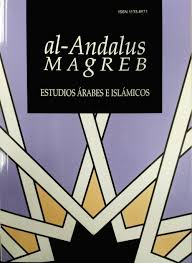Mujer y herencia en el contexto musulmán y bereber norteafricano. [ Women and heritage in the Muslim and Berber North African context]

التنزيلات
- PDF (Español (España)) 1972
- EPUB (Español (España)) 30
- VISOR (Español (España))
- MOVIL (Español (España))
- XML (Español (España)) 32
معلومات
الملخص
La regulación de la herencia musulmana se encuentra directamente explicitada en el Corán que otorga a la mujer un lugar en la sucesión. En el norte de África, sin embargo, estas normas han tenido que convivir con las distintas costumbres bereberes que casi de forma unánime han tratado de impedir o dificultar el acceso de la mujer a la propiedad de la tierra con el objetivo de preservar el patrimonio familiar en la línea masculina. Si bien los ordenamientos actuales, basados en las normas islámicas, reconocen el derecho de la mujer a heredar, la igualdad sucesoria está aún lejos de alcanzarse.
الكلمات المفتاحية
التنزيلات
كيفية الاقتباس
الرخصة

هذا العمل مرخص بموجب Creative Commons Attribution-NonCommercial-NoDerivatives 4.0 International License.
يوافق المؤلفون الذين تُنشر مقالاتهم وبحوثهم في هذه المجلة على الشروط التالية:
أ) يجوز للمؤلفين الحفاظ على حقوق التأليف والنشر الخاصة بهم، وعليهم أن يضمنوا للمجلة حقوق نشر مقالاتهم لأول مرة، وتخضع هذه الحقوق في نفس الوقت لرخصة المشاع الإبداعي
التي تسمح لأطراف ثالثة بمشاركة العمل المنشور طالما تم ذكر المؤلف وأن العمل نشر للمرة الأولى في هذه المجلة.
ب) يجوز للمؤلفين توقيع اتفاقية رخصة أخرى غير حصرية لتوزيع نسخة العمل المنشور (على سبيل المثال: إيداعه في سجل إلكتروني مؤسسي) شريطة ذكر النشر الأول في هذه المجلة.
ج) يسمح للمؤلفين وينصح بنشر مقالاتهم عبر الشبكة العالمية (على سبيل المثال في سجلات إلكترونية مؤسساتية أو في الموقع الإلكتروني الخاص بهم) مباشرة بعد قبول البحث لنشره في المجلة، إذ أن ذلك قد يؤدي إلى تبادلات مثيرة للاهتمام وإلى زيادة الإشارات إلى المقالات المنشورة واقتباس مضامينها (انظر "أثر الولوج المفتوح والمتاح للجميع").
المراجع
AIT MOUS, Fadma y BERRIANE, Yasmine (2015): “Terres collectives et inégalités: le combat des soulaliyates”, Les dossiers Economia, p. 28-31. http://economia.ma/content/terres-collectives-et- in%C3%A9galit%C3%A9s-le-combat-des-soulaliyates
ASPINION, Robert (reed. 2008): Contribución al estudio del derecho consuetudinario bereber marroquí, traducción, Mohammed Salhi, Abderrahman Laaouina. Rabat, IRCAM.
BLANCO IZAGA, Emilio (reed.1995): Emilio Blanco Izaga: Coronel en el Rif. Una selección de su obra, publicada e inédita, sobre la estructura sociopolítica de los rifeños en el norte de Marruecos. Estudios introductorios y notas de David Montgomery Hart, Melilla, Ayuntamiento de Melilla, Fundación Municipal y Sociocultural y UNED-Centro Asociado Melilla.
BLEUCHOT, Hervé (2000): “Introduction. Les sources formelles du droit musulman”, Droit musulman: Tome 1: Histoire. Tome 2: Fondements, culte, droit public et mixte, Aix-en-Provence, Presses universitaires d’Aix- Marseille, p. 479-484 [http://books.openedition.org/puam/1039 p. eléct. 1- 9].
BLEUCHOT, Hervé (1999): “Habous”, Encyclopédie Berbère, 21 | Gland – Hadjarien, Aix-en-Provence, Edisud, p. 1-9 [http://encyclopedieberbere.revues.org/1840]. CORTÉS, Julio (2005): El sagrado Corán, (Versión castellana), San Salvador,
Mustafa Al-Salvadori, Centro Cultural Islámico Fátimah Az-Zahra. GABSI, Abdallah (2002): “Civilisation musulmane et Droit musulman”, Revue
Saout el Jalia, n. 44/45, París, p. 33-37.
GAUDRY, Mathéa (1929): Le femme Chaouia de l’Aurès. Étude de sociologie
berbère, París, Librairie Orientaliste Paul Geuthner.
GÉLARD, Marie-Luce (2003): Le pilier de la tente. Rituels et représentations
de l’honneur chez les Aït Khebbach (Tafilalt), París, Éditions de la Maison
des Sciences de L’Homme, Éditions Ibis Press. HACOUN-CAMPREDON, Pierre (1921): Étude sur l’évolution des coutumes
kabyles spécialement en ce qui concerne l’exhérédation des femmes et la pratique du hobous, Alger, Ancienne Maison Bastide-Jourdan, Jules Carbonel.
HANOTEAU, Adolphe y LETOURNEUX, Aristide (2003 [1873]) : La Kabylie et les coutumes kabyles, París, Éditions Bouchène, Tomos I-III.
HUFFAKER, Shauna (2012): “Gendered limitations on women property owners: three women of early modern Cairo”, Hawwa. Journal of Women of the Middle East and the Islamic Word, 10, Leiden, Brill, p.127-50.
LAOUST, Émile (1915) : “Les Izayan d’Oulmès”, Les Archives berberes, 1915-16 vol.1, fascículo 4, cap.IV, Rabat, Publication du Comité d’Études Berbères, 265-278 http://bnm.bnrm.ma:86/ClientBin/images/book393968/doc.pdf p. élec. 79.
LAYISH, Aharon (1997): “The family waqf and the sharīˁa law of successions in modern times”, Islamic Law and Society, 4, 3, Leiden, Brill, p. 352-388. LAYISH, Aharon (1995): “Bequests as an instrument for accommodating
inheritance rules: Israel as a case study”, Islamic Law and Society,2,3, Leiden, Brill, p. 282-319.
LAYISH, Aharon (1983): “The Mālikī Family "Waqf" according to Wills and "Waqfiyyāt"”, Bulletin of the School of Oriental and African Studies, University of London, vol. 46, n. 1, Cambridge University Press, p. 1-32.
MILLIOT, Louis (1953): Introduction à l’étude du droit musulman, París, Recueil Sirey.
MORAND, Marcel (1913): “ Le Droit Musulman Algérien (Rite Malékite). Ses origines”, Revue Algérienne, Tunisienne et Marocaine de Législation et de Jurisprudence, junio, Argel, Typographie Adolphe Jourdan, p. 1-23.
POWERS, David S. (2007): “Law and custom in the Maghrib, 1475-1500: On the disinheritance of women”, Law, custom and statut in the Muslim Word. Studies in honor of Aharon Layish, cap. 2, Leiden, Brill, p. 17-39.
POWERS, David S. (1999): “The Islamic Family Endowment (Waqf)”, V anderbilt Journal of T ransnational Law , Nashville, V anderbilt University, Vol. 32, p. 1167- 1190.
SALHI, Mohamed Brahim (2004): Société et religion en Kabylie : 1850-2000, Atelier national de reproduction des thèses, Paris.
STAHL, Paul Henri (1997): La Méditerranée. Propriété et structure sociale. XIXe-XXe siècles. Aix-en-Provence, Édisud.
SURDON, Georges (1936): Institutions et coutumes des Berbères du Maghreb (Maroc, Algérie, Tunisie, Sahara). Leçons du Droit Coutumière Berbère, Tánger-Fez, Aux Éditions Internationales.
TILLION, Germaine (1966) : Le Harem et les cousins, Paris, Éditions du Seuil. YAFOUT, Merieme (2015): “L’égalité en matière d’héritage. Jeunes et savoir commun au Maroc”, L’Année du Maghreb, n. 13, Aix-en-Provence, CNRS Éditions, p. 129-143 [http://anneemaghreb.revues.org/2571 p. eléc.1-15].



